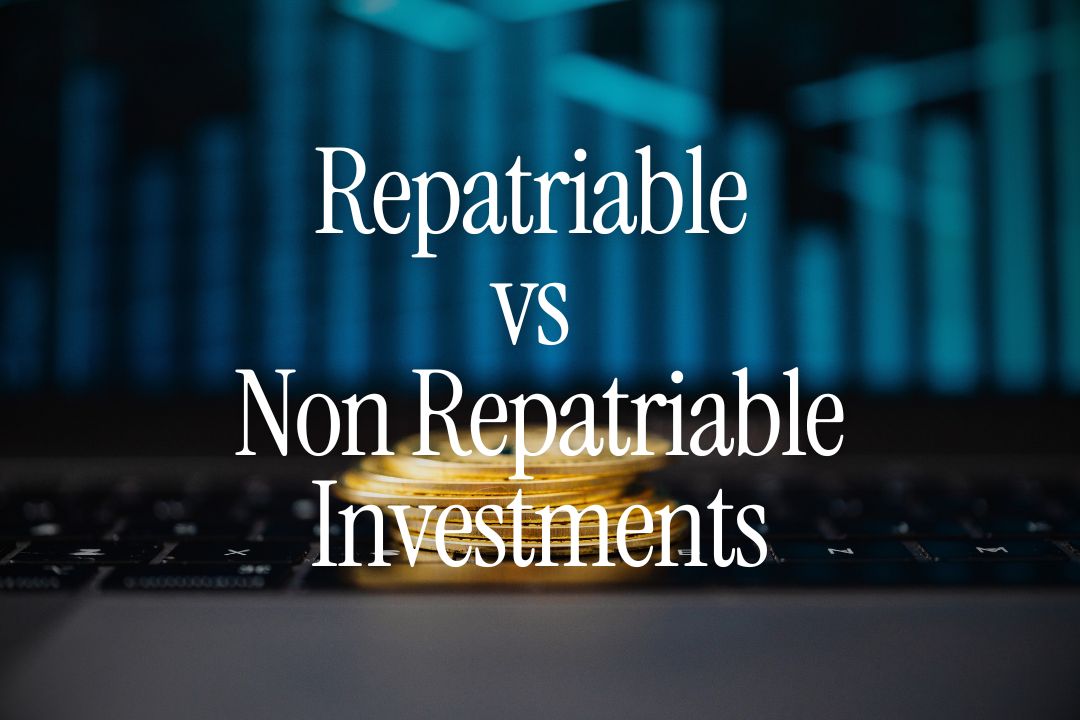
₹73,000. That's what Vikram from Dubai paid in banking charges last year across his three NRI accounts.
₹12,000. That's what his colleague Ahmed paid for the same banking services with a different bank.
₹2,400. That's all Sarah from Abu Dhabi paid after optimizing her account structure based on fee analysis.
The difference? Understanding the hidden charge structure that Indian banks don't openly discuss.
Here's the reality: NRI account charges can range from ₹2,000 to ₹75,000 annually depending on your bank choice, account type, and transaction patterns. Yet 80% of NRIs never compare charges before opening accounts, focusing only on interest rates.
The cost difference between the most expensive and least expensive NRI banking setup can exceed ₹60,000 per year – enough to fund an additional investment or family vacation.
Why NRIs Are Choosing Smart Banking
Over the past 18 months, I've analyzed banking costs for over 500 NRIs across the UAE, USA, and UK. The patterns are clear:
Traditional approach: Choose bank based on branch network or brand name
Result: High charges, poor digital experience, annual fees of ₹25,000-75,000
Smart approach: Compare total cost of ownership across all fee categories
Result: Optimized costs, better service, annual fees of ₹5,000-15,000
Strategic approach: Hybrid banking with GIFT City alternatives
Result: Minimal charges, superior returns, annual fees under ₹5,000
Let me show you the exact numbers that will transform how you think about NRI banking costs.
How It Really Works
The Hidden Fee Categories Most NRIs Miss
Banks prominently advertise "free" NRI accounts, but bury the real costs in fine print. Here are the six fee categories that actually matter:
1. Account Maintenance Charges
These kick in when you don't maintain minimum average monthly balance (AMB).
2. Transaction Fees
NEFT, RTGS, wire transfers, and international remittances all carry charges.
3. Debit Card Costs
Annual fees, international usage charges, currency conversion markups.
4. Cash Handling Charges
Deposits and withdrawals beyond free limits trigger penalties.
5. Service Request Fees
Cheque books, demand drafts, certificates, account statements.
6. Non-Maintenance Penalties
The most expensive category – falling below minimum balance requirements.
👉 Key insight: Banks earn more from fees than interest rate spreads on NRI accounts.
Comparative Analysis by Bank
State Bank of India (SBI): The Government Giant
Minimum Balance Requirements:
- Metro branches: ₹1,00,000
- Semi-urban branches:₹50,000
Source: SBI
Transaction Charges:
- NEFT/RTGS online: FREE (biggest advantage)
- Wire transfers: ₹1,000-2,500 depending on amount
- Branch NEFT (if you must): ₹2.5 to ₹25 based on amount
Debit Card Charges:
- Classic card: ₹200 + GST annually
- Gold card: ₹300 + GST annually
- International usage: 3.5% + GST markup
Key Benefits:
- Account maintenance penalties waived since March 2020
- Largest branch network globally
- Free online fund transfers
Cost Example: Medium usage NRI: ₹8,000-12,000 annually
ICICI Bank: The Digital Leader
Minimum Balance Requirements:
- Standard NRE/NRO: ₹10,000 AMB
- Premium variants: ₹25,000-₹100,000 AMB
Transaction Charges:
- NEFT/RTGS online: FREE
- Wire transfers: ₹1,500-3,000 depending on currency
- International debit card: ATM withdrawal at other banks (outside India) is ₹125 per transaction + 3.5% currency conversion charge. Non-financial transactions are ₹25 per transaction.[
Debit Card Charges:
- Smart Shopper Silver: ₹300 annually
- International transactions: 3.5% + GST
- Dynamic Currency Conversion: Additional 1%
Special Features:
- 3-in-1 account integration (saving, trading, demat)
- Superior mobile banking platform
- 24/7 NRI customer support
Cost Example:
Medium usage NRI: ₹12,000-18,000 annually
(Source:ICICI)
HDFC Bank: The Premium Option
Minimum Balance Requirements:
- Metro branches: ₹10,000 AMB
- Semi-urban branches: ₹5,000 AMB
Transaction Charges:
- NEFT/RTGS online: FREE
- Wire transfers: ₹1,000-2,500 + correspondent bank charges
- International remittances: Competitive forex rates
Debit Card Charges:
- Classic international card: ₹750 annually
- Premium variants: ₹1,500-3,000 annually
- Foreign transactions: 3.5% markup + GST
Value Proposition:
- Premium customer service
- Global acceptance of cards
- Comprehensive investment platform
Cost Example:
Medium usage NRI: ₹15,000-25,000 annually
Axis Bank: The Flexible Choice
Minimum Balance Requirements:
- Easy Savings: ₹10,000 AMB
- Prime Savings: ₹25,000 AMB
- Priority accounts: ₹2,00,000 total relationship value
Transaction Charges:
- NEFT/RTGS online: FREE
- Wire transfers: ₹1,200-2,800 depending on amount
- International transfers: Competitive rates for higher tiers
Debit Card Charges:
- Easy account: ₹200 + GST annually for NRE, ₹150 + GST annually for NRO
- Prime account: ₹200 + GST annually for NRE, ₹150 + GST annually for NRO (no separate issuance fee)
- Priority: Premium card benefits included
Differentiation:
- Flexible account tiers
- Mariner account for frequent travelers
- Strong UAE presence
Cost Example:
Medium usage NRI: ₹10,000-20,000 annually
Source: Axis Bank - Fees and Charges
Comprehensive Comparison Tables
Table 1: Minimum Balance & Penalties
Bank | Basic AMB | Premium AMB | Penalty (Monthly) | Waiver Conditions |
|---|---|---|---|---|
SBI | ₹25,000-1,00,000 | ₹1,00,000+ | ₹0 (Waived) | All accounts |
ICICI | ₹15,000 | ₹25,000-50,000 | 6% of shortfall up to ₹500 | Salary credits |
HDFC | ₹5,000-10,000 | ₹25,000+ | ₹600-1,500 | Monthly salary ₹25,000+ |
Axis | ₹10,000-25,000 | ₹2,00,000 TRV | ₹500-1,000 | Relationship value |
Table 2: Transaction Charges (Online)
Service | SBI | ICICI | HDFC | Axis |
|---|---|---|---|---|
NEFT/RTGS | FREE | FREE | FREE | FREE |
Wire Transfer | ₹1,000-2,500 | ₹1,500-3,000 | ₹1,000-2,500 | ₹1,200-2,800 |
International Card Usage | 3.5% + GST | 3.5% + GST | 3.5% + GST | 3.5% + GST |
Demand Draft | ₹50-200 | ₹100-300 | ₹150-400 | ₹100-300 |
Table 3: Annual Fee Estimate (Medium Usage)
Bank | Debit Card | Service Charges | Wire Transfers | Total Annual Cost |
|---|---|---|---|---|
SBI | ₹200-300 | ₹1,000-2,000 | ₹6,000-8,000 | ₹8,000-12,000 |
ICICI | ₹500-750 | ₹2,000-4,000 | ₹8,000-10,000 | ₹12,000-18,000 |
HDFC | ₹750-1,500 | ₹3,000-5,000 | ₹8,000-12,000 | ₹15,000-25,000 |
Axis | ₹750-999 | ₹2,000-4,000 | ₹7,000-10,000 | ₹10,000-20,000 |
Also Read - Top Indian Banks for Online NRI Account Opening
Key Advantages for Gulf NRIs
1. Online Banking Fee Waivers
All major banks now offer free NEFT and RTGS transfers through digital channels. This eliminates the biggest cost component for most NRIs.
Smart strategy: Never visit branches for routine transactions. Everything can be done online.
2. Salary Account Benefits
Banks offer significant charge waivers for accounts receiving regular salary credits:
- Minimum balance waivers for monthly credits above ₹25,000
- Free debit cards for premium salary accounts
- Enhanced transaction limits without additional charges
3. Relationship-Based Pricing
Higher total relationship value (TRV) unlocks better fee structures:
- Priority banking tiers often waive most standard charges
- Investment linking can eliminate account maintenance costs
- Combined family accounts allow pooling of minimum balances
👉 Tip: Maintain ₹25 lakh+ relationship value to access premium pricing across all banks.
Also Read - NRI Account Charges & Fees in India - Complete Cost Guide
Downsides You Must Consider
1. International Transaction Costs Add Up
While domestic transfers are free, international usage remains expensive:
Debit card abroad:
- 3.5% markup on all transactions
- ₹150-300 per ATM withdrawal
- Additional 1% for Dynamic Currency Conversion
Real example: Using Indian debit card for $2,000 monthly expenses abroad costs ₹6,000-8,000 annually in charges alone.
2. Wire Transfer Fees Are Substantial
Despite competitive rates, wire transfer charges range from ₹1,000-3,000 per transaction. For NRIs sending money regularly, this becomes a significant cost.
Alternative approach: Consider GIFT City USD accounts that eliminate currency conversion costs entirely.
3. Hidden Correspondent Bank Charges
Your Indian bank's fees are just the beginning. Intermediary and correspondent banks add:
- Receiving bank charges: $15-50 per wire transfer
- Intermediary bank fees: $10-25 for routing
- Currency conversion spreads: 0.5-2% depending on bank
Total wire transfer cost: Often 2-4% of amount transferred
Also Read - Hidden Charges in NRI Accounts - What Banks Don't Tell You
4. Service Request Fees Are Rising
Physical services now carry premium charges:
- Cheque book: ₹100-300 per book
- Account statements: ₹100-200 per request
- NOC/Certificate: ₹500-1,500 each
- Branch assistance: ₹25-100 per transaction
5. Non-Digital Penalty Structure
Banks actively discourage branch visits through higher charges:
- Branch NEFT: ₹25-50 vs free online
- Cash deposits: ₹1 per ₹1,000 beyond free limit
- Manual processes: 2-5x higher fees than digital
Application Process for Cost Optimization
Phase 1: Account Audit (Week 1)
Step 1: Calculate current total costs
List all charges paid in the last 12 months across:
- Account maintenance penalties
- Transaction fees (NEFT, wire transfers)
- Debit card charges
- Service request costs
Step 2: Analyze transaction patterns
Track your typical monthly usage:
- Number of wire transfers to India
- International debit card usage
- Cash withdrawals and deposits
- Service requests (statements, certificates)
Step 3: Determine optimal bank mix
Based on usage patterns, identify 2-3 banks that offer the best cost structure.
Phase 2: Strategic Account Setup (Week 2-3)
Step 1: Choose primary bank
Select based on your highest-cost activities:
- High wire transfer volume: SBI or HDFC for lower fees
- Digital-first approach: ICICI for superior app experience
- Frequent travel: Axis for international partnerships
Step 2: Negotiate better terms
Banks often waive charges for new NRI customers:
- First-year free debit cards
- Waived account opening charges
- Higher free transaction limits
Step 3: Set up digital infrastructure
Enable all online services to access free transaction benefits:
- Internet banking with full transaction rights
- Mobile banking apps
- UPI registration for domestic payments
Phase 3: Ongoing Optimization (Monthly)
Step 1: Monitor fee charges
Review monthly statements for unexpected charges:
- Minimum balance violations
- International transaction fees
- Service charges for branch visits
Step 2: Optimize transaction timing
Schedule large transfers and payments to minimize costs:
- Batch wire transfers to reduce per-transaction fees
- Use digital channels exclusively for routine transactions
- Plan cash requirements to avoid excess withdrawal charges
Step 3: Leverage technology
Modern alternatives often offer better value:
- UPI for domestic payments (zero charges)
- GIFT City accounts for USD transactions (no conversion costs)
- Fintech platforms for international transfers (better rates)
Advanced Cost-Cutting Strategies
1. The Multi-Bank Approach
Smart NRIs use different banks for different purposes:
Primary bank (SBI): Free NEFT/RTGS, large balance maintenance
Secondary bank (ICICI): Superior digital experience, investment linking
Tertiary option (GIFT City): USD transactions, tax-free returns
Combined annual cost: ₹5,000-8,000 vs ₹20,000+ single bank
2. Timing Your Banking Lifecycle
Account opening phase: Negotiate maximum waivers and benefits
Relationship building: Gradually increase TRV for premium pricing
Optimization phase: Leverage loyalty for charge waivers
3. The GIFT City Alternative
For NRIs serious about cost optimization:
- USD-denominated accounts eliminate currency conversion
- Tax-free interest income beats traditional FD returns
- No TDS complications simplify tax compliance
- Professional fund management available at scale
Cost comparison:
Traditional NRI banking: ₹15,000-25,000 annually
GIFT City optimized: ₹2,000-5,000 annually
Net saving: ₹10,000-20,000 per year
Your Action Plan
This week:
Calculate your total NRI banking costs for the last 12 months. Most NRIs are shocked by the actual numbers.
Next month:
Compare your costs against optimal bank fee structures using the tables above.
Quarter 1:
Implement a two-bank strategy: one for regular transactions, one for investments and high-value activities.
Annual review:
Evaluate whether GIFT City banking solutions can reduce your total banking costs while improving returns.
Ready to slash your NRI banking costs by 60-80%? The difference between expensive traditional banking and smart optimization can fund an entire vacation or additional investment annually.
Join thousands of cost-conscious NRIs who've discovered fee-free USD banking that eliminates most traditional NRI account charges.
Join our WhatsApp community for detailed bank charge analysis and account optimization strategies.
Download the Belong app to explore GIFT City solutions that eliminate traditional banking fees while delivering superior returns.
Sources:




